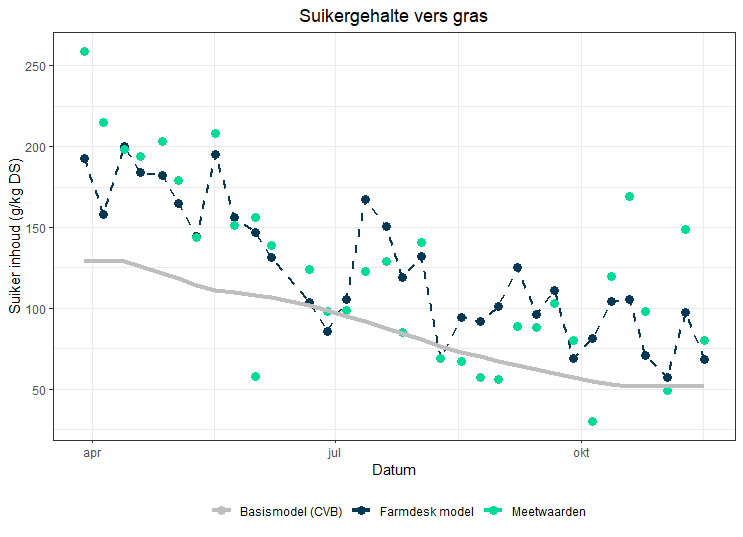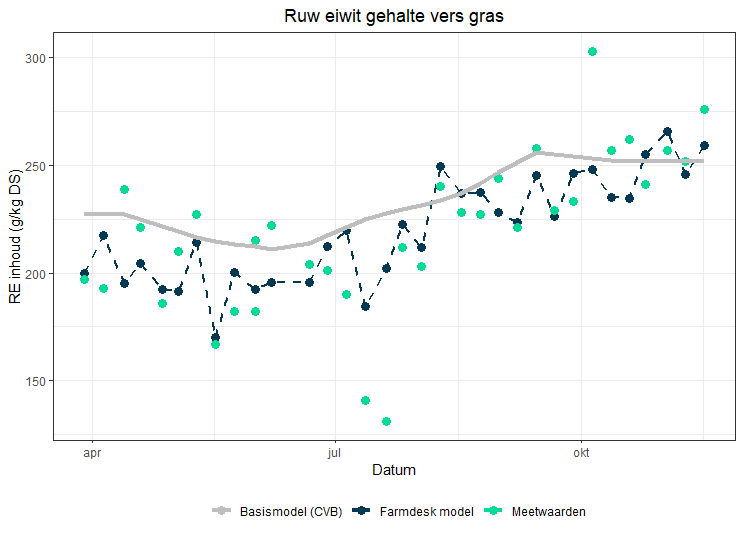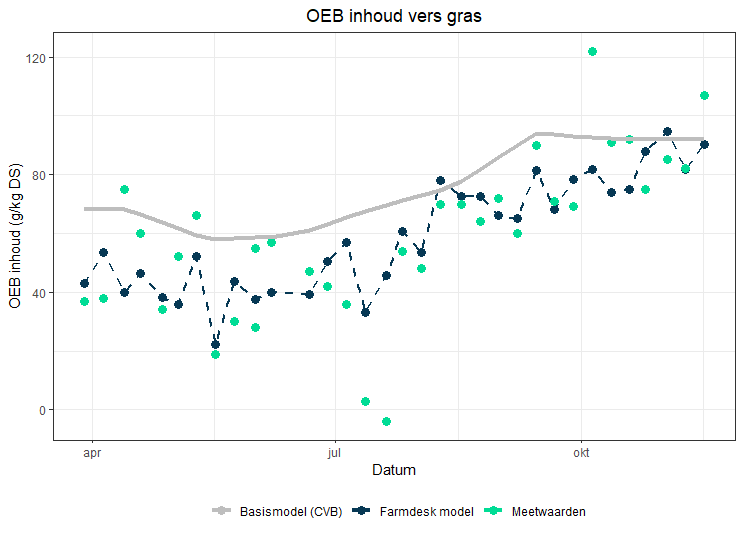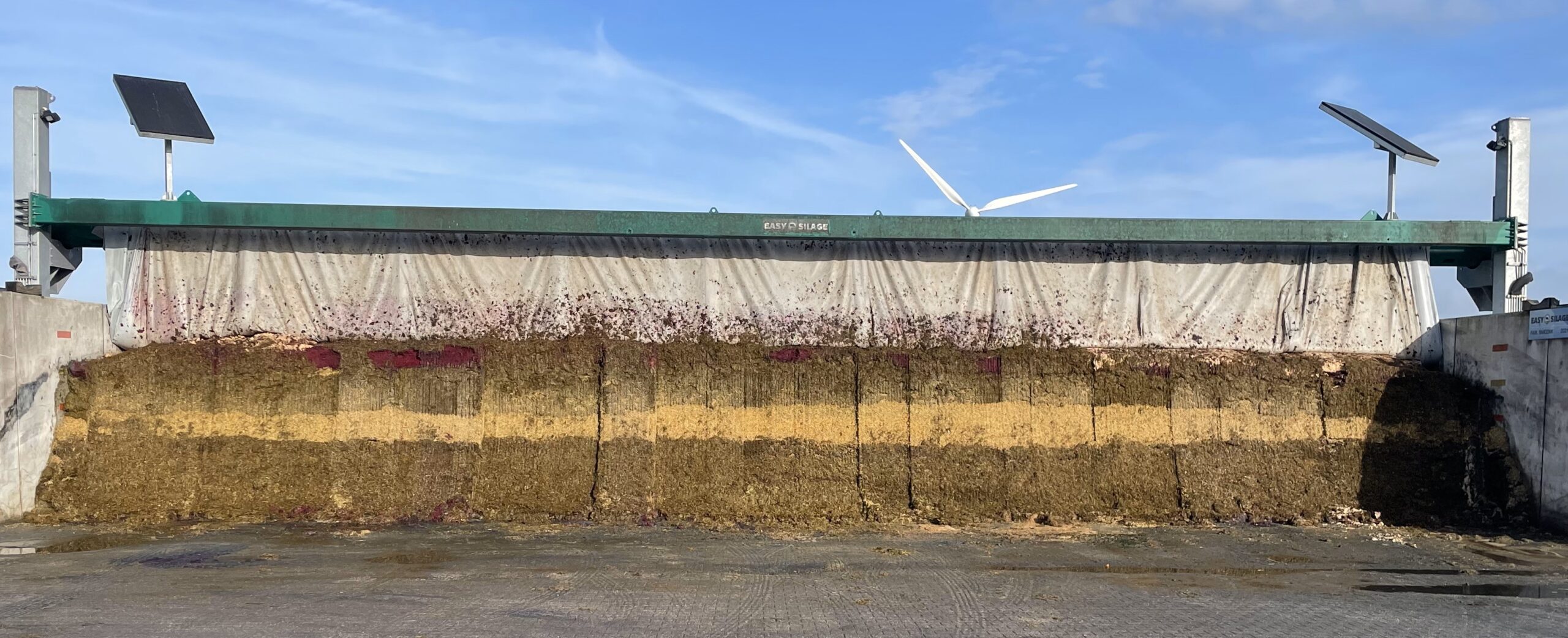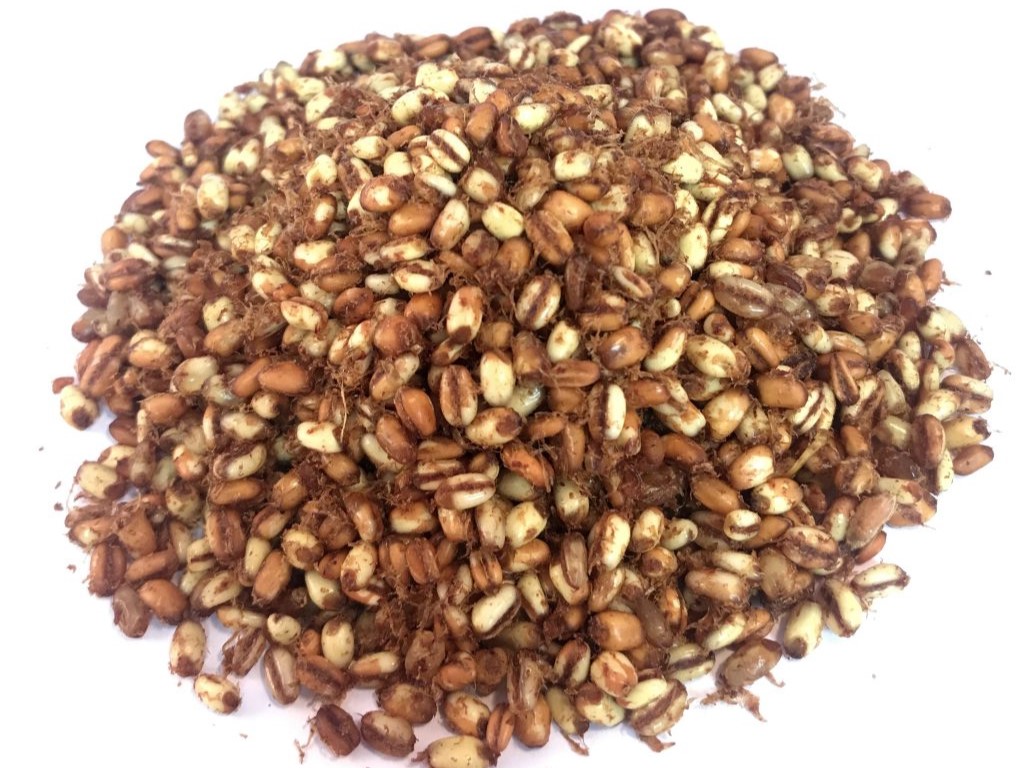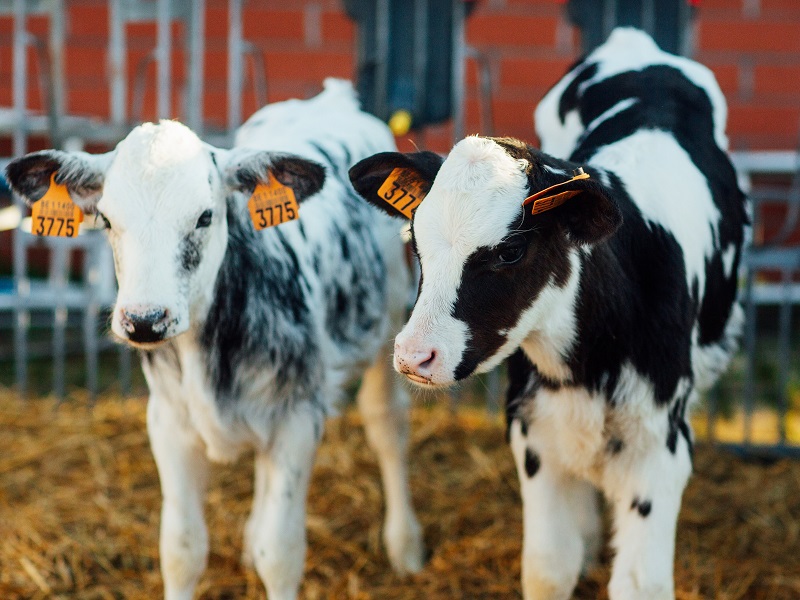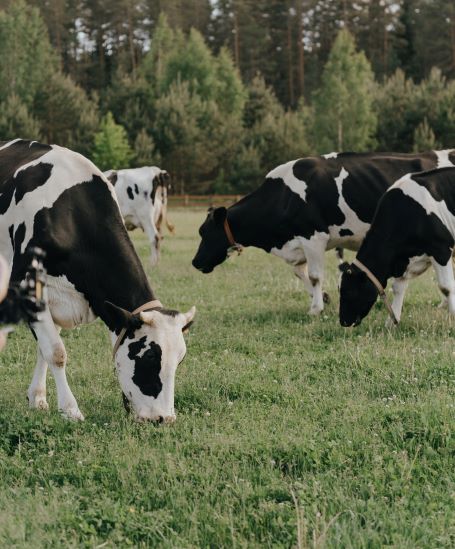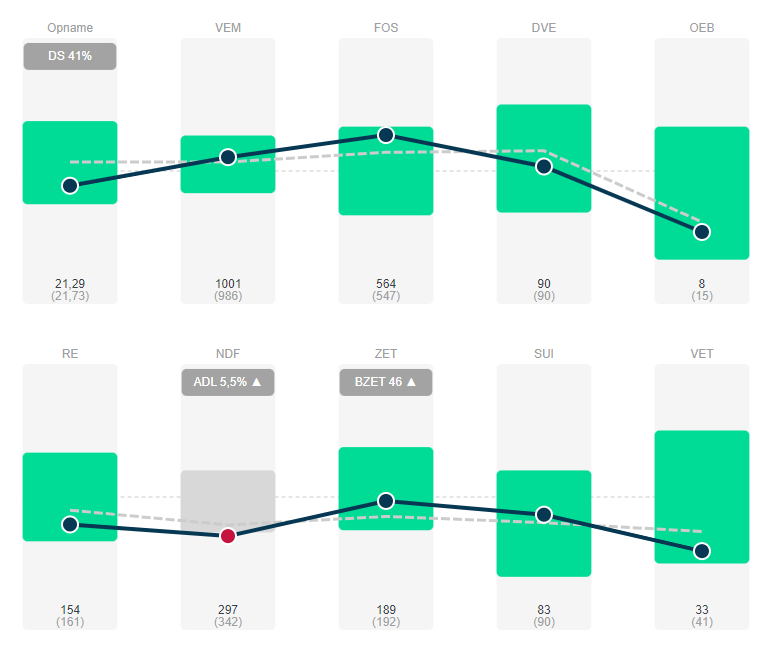Partly from society's point of view, the demand for cows on pasture is likely to increase. For organic farmers, this already goes without saying.
However, grazing and feeding fresh grass brings some challenges. Throughout the growing season, the average grass composition shifts and specific weather conditions will cause further fluctuations in grass quality.
These fluctuations are the challenge. High-yielding cows prefer a very stable ration and cannot handle fluctuations in feed quality very well themselves. These fluctuations will undermine the cow's persistence throughout lactation.
To minimize the impact of quality variation, a fresh grass module was developed by Farmdesk. By better estimating the intake and quality of fresh grass, we can better enable the farmer to counteract variations in grass and ultimately keep ration quality as constant as possible. This will lead to optimal and efficient use of feed on the farm, combined with high and stable production and healthy animals.
Farmdesk's fresh grass module automatically makes estimates of grass quality on your farm based on a seasonal model. On top of this seasonal model, daily farm-specific corrections are made based on local weather conditions.
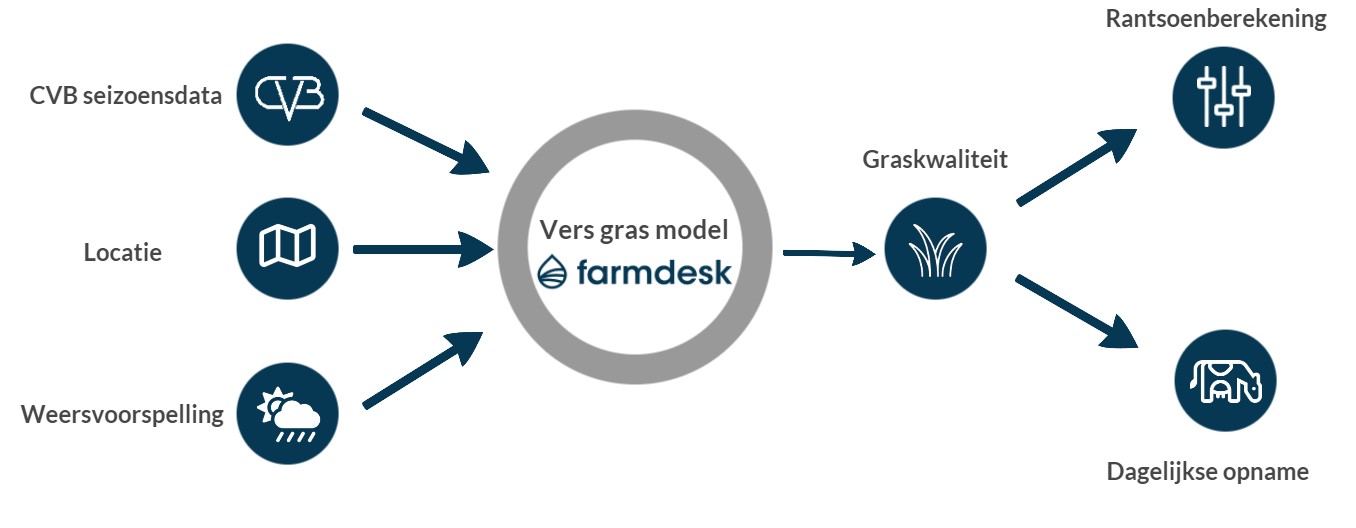
As a basis, we rely on CVB measurement data on the evolution of fresh grass composition throughout the growing season. This model is supplemented with expert knowledge on changes in grass quality due to weather conditions. The model was then tested in practice and the most relevant parameters influencing grass quality were sought through statistical analysis.
Influence of climatic conditions
Influence of sunlight
As for all plants, sunlight is a very important factor for grass. This is because this sunlight enables the grass to engage in photosynthesis. Through photosynthesis, the plant obtains its energy and the main end product of this photosynthesis is sugar (which will give rise, among other things, to the FOS and VEM content of the grass). The more sunlight the grass receives, the higher the production of sugar will be under normal conditions. This will further give rise to a higher content of FOS and VEM in the grass. In this article there is a more in-depth look at the digestion of carbohydrates such as sugar in cattle.
In addition to the production of carbohydrates, the photosynthesis reaction will also provide more energy for the plant to completely finish protein . Thus, the DVE/OEB ratio of grass will increase as the number of hours of sunlight increases, precisely because the plant has more energy available to finish the protein into nice chains of amino acids. More info on protein, the DVE/OEB ratio and its importance to cattle can be found in the article on protein digestion in cattle.
Influence of night temperature
During the night, the metabolism of the grass will be completely different. During the night, plants actually "become beasts." The sugar reserves that were formed throughout a sunny day in the photosynthesis reaction are broken down by the plant during the night, just like in animals. The rate of degradation is highly dependent on temperature.
During a warm night, the plant's metabolism will be high and sugar burning to CO2 and water will also be significant. During a cold night, we see the opposite happen: low metabolism and little breakdown of sugar by the plant.
Periods of sunny days and cold nights thus provide a large sugar accumulation in the grass, due to the high production and low breakdown of sugar. Whereas the grass is more likely to be sugar poor when there is little sunlight and the nights are rather warm.
Influence of moisture supply
Moisture supply can be represented in several ways. The parameters covered in Farmdesk's fresh grass module are precipitation, relative humidity and an indicator of the amount of moisture in the top ten centimeters of the soil.
In general, moisture supply is very important to enable plant growth. This moisture supply comes from the soil supply or directly from precipitation. If there are no restrictions (drought or excess water), the grass can grow without problems.
During a period of relative drought, we see that the grass goes into a kind of survival mode. The grass is going to defend itself against dehydration: the stomata of the plant remain closed. As a result, there will be lower CO2 uptake by the plant and photosynthesis activity will shut down, resulting in lower growth of the grass. At the same time, the grass's production of cellulose and lignin will increase relatively. The grass will "wood up" to protect against further desiccation. Thus, in addition to reduced growth, the quality of the grass will also decline. Here we see that the NDF content and crude fiber content will increase while the digestibility and rate of digestion will decrease.
Periods where the moisture supply is too high can also be a problem for the quality of fresh grass. The dry matter content of the grass can deteriorate significantly and fungal growth can start at the bottom of the grass. These wet periods are also often accompanied by little sunlight so little sugar will be produced and DVE/OEB ratios will be lower because the plant does not have enough energy available to finish the protein.
Soil nitrogen supply
In addition to direct effects on the plant, weather will also have an impact on soil nitrogen supply. The mineralization of nitrogen is slow in spring and accelerates as soil temperature rises. In addition to the instantaneous temperature, the succession of warmer periods (the summer months) makes it increasingly easier in late summer (starting in August) to obtain high levels of protein in the grass through the release of nitrogen from soil organic matter.
The above reasoning holds true for soil nitrogen, but also applies to the action of clover. Clover growth will peak in summer and will readily make nitrogen available in late summer, even with limited fertilization.
Results of the fresh grass module
Based on weather data from a specific location and seasonal trends that were collected, grass quality can be estimated for each Farmdesk farm.
Sugar content
The following figure presents the evolution of sugar content in grass. The base model (based on the CVB data) is shown together with the predicted values from the Farmdesk model. In addition, measurement points from a Farmdesk test farm are also shown. It is clear that the fresh grass model, which takes weather influences into account, can better predict sugar values throughout the season.
In general, the sugar content of grass decreases throughout the season. In spring, there are often already relatively sunny days but cold nights. As a result, there is a higher accumulation of sugar.
During the summer months, the warmer nights cause greater breakdown of sugar, while in the fall there is less sugar production due to the short days and limited sunshine hours.
Crude protein
The following figure shows the levels of crude protein (RE) content of fresh grass. Again, it is clear that there is strong correlation between Farmdesk's fresh grass model and the measured values.
In the figure, we see the nitrogen dynamics of the soil strongly reflected. In spring, there is limited mineralization of nitrogen, causing low protein content. As the soil warms through the year, more nitrogen becomes available and plant protein will increase. By providing fertilizer in the spring, the available nitrogen will be higher, thus the protein can be affected.
OEB
The figure below shows the OEB evolution throughout the year. For the evolution of OEB values throughout the year, we see an interplay of sugar and (crude) protein. In spring there is a lot of energy (sugar) available for a limited amount of protein. As a result, the protein will be well finished and the OEB fraction is low. In the fall, there is a lot of nitrogen available but less energy, resulting in more protein in the OEB fraction.
Use of fresh grass module in practice
With the new fresh grass model in Farmdesk, it will be possible to monitor and steer your ration even better when grazing or feeding fresh grass (barn feeding). Based on the predicted grass quality, you can adapt your ration even more specifically to the needs of your animals.
In addition to improved rationing, it is also possible to better estimate grass intake. Based on actual milk production, calculated grass quality and VEM requirement, Farmdesk will automatically supplement fresh grass intake in the daily feed lists. These more precise calculations allow for easier and more accurate estimation of key figures related to efficiency and farm performance.
